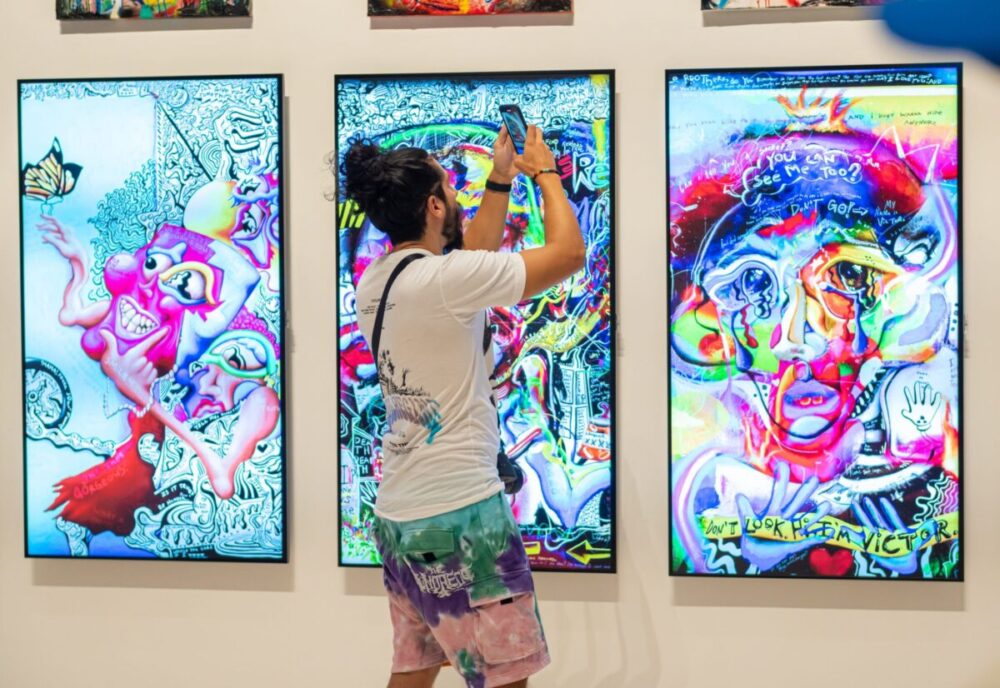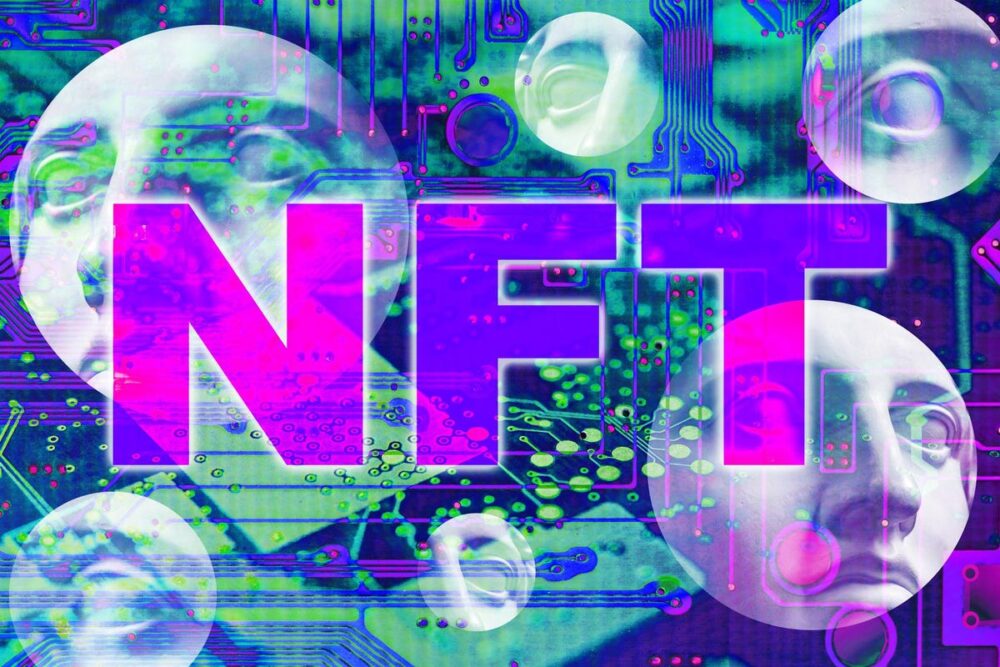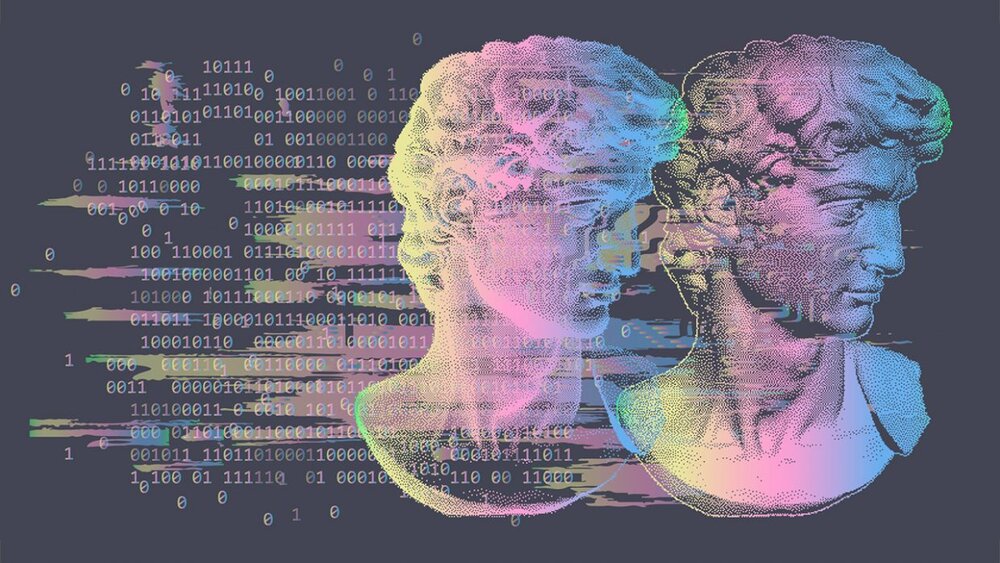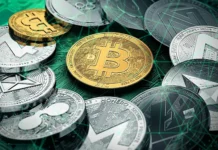
The crypto world is evolving, and one innovation is NFT. The rise of Non-Fungible Tokens (NFTs) and crypto art is changing not just the crypto world but the art world. While some people are still more interested in how to buy crypto, others want to learn more about NFTs and crypto art. If you belong to the latter, keep reading this article.
Understanding NFTs and Crypto Art

Non-fungible tokens, also known as NFTs, are digital assets that reflect ownership of a unique (hence, non-fungible) item or piece of content, such as art, music, or video. NFTs are a type of crypto collectible and are built on a blockchain, a decentralized digital ledger that maintains a permanent and transparent record of ownership and transactions.
NFTs are fully digital and exist exclusively in the digital realm, as opposed to traditional art sales and auctions, which often involve physical works of art that can be purchased, sold, and swapped. This means that NFTs can be bought and sold without needing the underlying asset to be physically transferred. It is often referred to as crypto art investment since ownership of an NFT offers a value increase in the future.
The level of transparency and accessibility is another significant distinction between crypto art and traditional art sales and auctions. Each NFT art ownership and transaction history is stored on a public blockchain using NFTs, creating a transparent and immutable record of ownership and transactions.
Moreover, NFTs are entirely digital and may be purchased and sold abroad, making them more accessible to a wider audience and positively influencing crypto art market growth. Artists may also participate in NFT art auctions and sell their art easily via convenient crypto art marketplaces.
Third, NFTs provide new ways for artists and creators to monetize their work. Creators can utilize NFTs to sell their nft photography directly to collectors, avoiding traditional gatekeepers like galleries and auction houses. Furthermore, because NFTs are one-of-a-kind and cannot be copied, producers may be able to receive royalties on future sales of their work.
Now that you better understand the differences between NFTs and traditional art, let’s see what are the potential advantages of using NFTs in the art market:
- Transparency. Because NFTs keep a permanent and visible record of ownership and transactions, they can assist in preventing fraud and boosting trust in the art market.
- Direct selling. NFTs let artists sell their work directly to collectors instead of going via traditional gatekeepers like galleries and auction houses. Access to decentralized marketplaces can open up new doors for aspiring artists.
- Royalties. NFTs can be programmed with royalties for the artist, allowing them to earn a percentage of the sale price each time the NFT is sold in the future.
- Global reach. Because NFTs may be bought and sold globally, they have the potential to reach a larger audience than actual pieces of art.
However, despite these numerous benefits and access to a huge range of crypto art galleries, there are a few limitations to using NFT markets for art. They include the following:
- High prices. For some artists, especially beginners, the cost of manufacturing and selling NFTs might be too expensive.
- Limited knowledge. Many people are still unfamiliar with NFTs and how they function.
- Lack of regulation. There is a risk of fraud and manipulation due to a lack of regulation and understanding.
- Environmental impact. Creating NFT requires consuming power, which has negative implications on nature.
Despite its limitations, the NFT’s popularity grows, making it one of the most interesting investment types.
The Growth of the Crypto Art Market

So, what about the crypto market analysis of NFTs? In recent years, the art market has seen a fast increase in the use of NFTs. The total amount of NFT transactions was $41 million in 2018, which increased to $946 million by 2024! A variety of causes have contributed to its expansion, including the following:
- The wider acceptance of blockchain technology.
- Access to new audiences.
- Increased awareness and media attention.
- Creation of new revenue streams.
- The ability to diversify one’s investment portfolio.
- Accessibility of art marketplace by people who couldn’t access it before.
The combination of these factors positively impacted the adoption of NFTs.
The Implications of NFTs for the Art Industry
Overall, NFTs have been growing steadily in popularity. From the time when no one could tell what NFTs were and their purpose, they turned into one of the most valuable investments. Moreover, NFTs have the potential to change the art market. Here are some of the implications of the crypto art market’s growth:
- Accessibility. Because they may be bought and exchanged globally, NFTs have the potential to make art more accessible to a wider audience.
- Redefining art ownership. By allowing the production of a unique digital asset that reflects ownership of a specific piece of information, NFT can provide a new way of defining ownership in the art world. This has the potential to upend traditional concepts of art ownership, specifically when the physical artwork and NFT ownership are contributed to by different individuals.
- Copyright laws, NFT art, and intellectual property. NFTs may also impact existing copyright rules, particularly those governing digital content. There may be new issues in determining ownership and attribution for digital art, especially if the physical artwork and NFT ownership are different people.
- New revenue sources. NFTs can generate new revenue sources for artists by developing recurring royalties. Such a feature can potentially alter how artists are compensated for their work.
- Environmental implications. This is a negative effect of the creation of NFTs since the process requires high energy consumption levels. This lack of sustainability is also one of the main reasons why NFTs are less widely accepted.
On the bright side, NFTs positively impact the art market since artists have more chances to sell their art, making auctions more accessible. Moreover, NFTs can potentially democratize the art world since artists no longer need an intermediary to sell their works. Thus, the art market becomes more accessible to a plethora of artists who weren’t considered “honorable” enough by auction houses or galleries.
Furthermore, new NFT art trends emerge. For example, NFTs enable the creation of 3D art, virtual and augmented reality art, music and sound art, and even gaming art!
The Challenges and Risks of Crypto Art

We have already mentioned two main challenges: environmental impact and NFT art regulations. The NFTs market can’t be sustainable if it requires so much energy. As for the regulations, it is still unclear how to resolve issues and disputes when they occur.
Other risks and challenges of crypto art include the following:
- Intellectual property issues. One person may create a piece of art and make an NFT to sell this artwork. However, who is the owner: the artist or the person who bought it? These and other challenges influence the NFT art market.
- Volatility and price speculation. While it’s easier to establish the price of a traditional art piece, it takes time to do so regarding crypto art. Such factors as media coverage and hype influence art’s price.
- Security risks. Blockchain can be hacked, meaning that anyone can lose ownership of an art piece if a hacker gains access to one’s NFTs.
Crypto art offers many opportunities, yet the industry must be regulated.
Expert Opinions on the Future of NFTs and Crypto Art
Predicting crypto art trends is impossible, but it is possible to make forecasts based on the current situation. First, there is an increased interest from artists, collectors, and regular users in the NFT industry.
Thus, it will continue to grow, leading to the creation and establishment of regulations. These regulations will have guidelines for determining various disputes between artists, art owners, and other parties. Furthermore, if the NFTs are to stay, it may lead to fixing issues related to environmental impact.

Conclusion
The future of NFTs and art will likely be shaped by several factors described in this article. These factors include regulations, environmental impact, technological innovation, the creation of new art forms, etc. As the market continues to expand and evolve, it will be even more critical for all invested parties to keep an eye on new regulations and legislation regarding NFTs.








